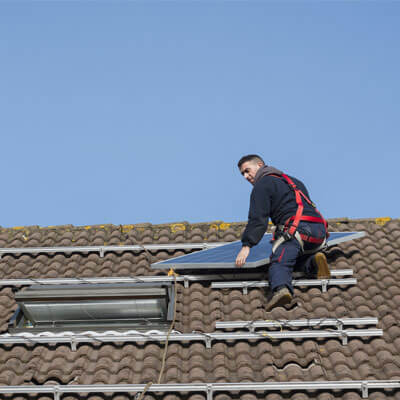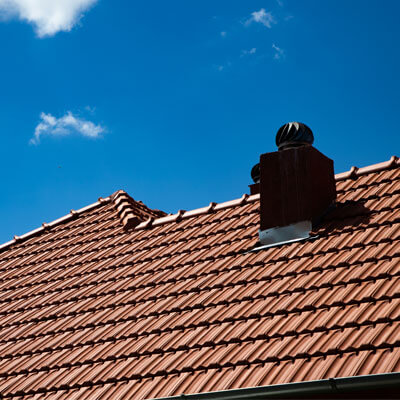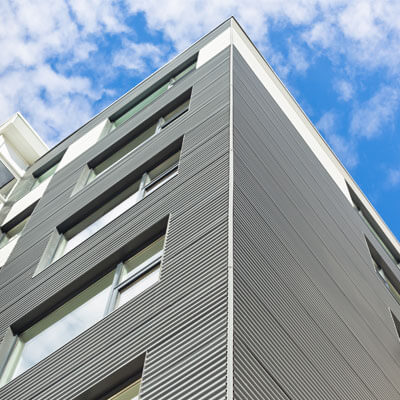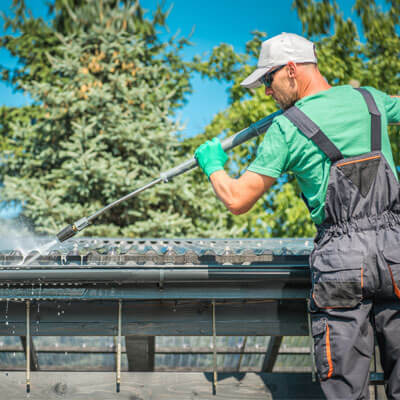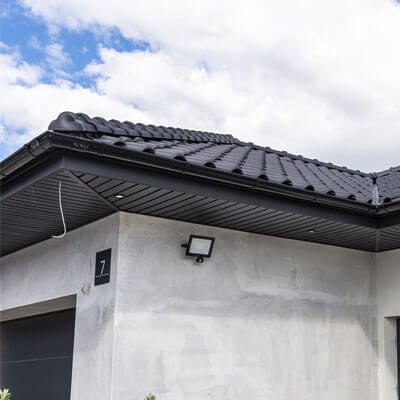Roofing materials can be expensive, but flat roofs are the least costly choice. They do a great job of protecting your home or business from the weather, keeping it inside dry and warm. There are numerous advantages to having a flat roof, but there are also disadvantages.
So, you need to make sure you have a plan for installing your flat roof before you start building your own home. This information might help you make more informed decisions regarding the repair or replacement of your flat roof. If you can converse with and learn more about possible roofing contractors, it will be easier to find the best roofing company for your project.
The most prevalent varieties of flat roofs are as follows:
Build Up Roofs or BUR
Build-up or BUR Flat roofs are made by putting several layers of roofing material on top of the waterproofing membrane. For a roof to keep water out, it needs layers like asphalt and felt. Just like any other roofing material, these systems will last for a long time if you take care of them and ensure they don’t get too wet.
Still, flat roofs are often called “tar and gravel roofs.” They are made of materials held together with asphalt tar and hot tar that have been melted down to a liquid state. Add gravel to the mixture to make it stronger and more durable.
This alternative to asphalt shingles has been the best way to cover low-slope roofs for a long time. Built-up roofs can get higher fire ratings, an extra safety measure you should consider in any building.

Pros of Built-Up Roof
Protection Against Fire
Some materials for flat roofs are not as strong as those for built-up roofs. They are more resistant to heavy winds and snowfall. You should not worry about leaks, cracks, or breakage because they are weatherproof.
First and foremost, built-up roofs offer excellent fire protection because their layers are often made of materials that don’t catch fire. They won’t either start a fire or put it out completely.
Durability
Built-up roofs have a better chance of lasting longer because they have many thick layers and different ways to keep water out. Consequently, you should anticipate spending less on roof maintenance and repairs.
Having more than one layer makes an item more durable and less likely to leak or tear. Since a leak is easy to spot immediately, it won’t get worse and require expensive replacement or repairs.
Cons of Built-Up Roof
Strength
The extra weight that a built-up roof adds is its main problem. Because removing all those layers takes time and work, it will be hard to put one up on your own, especially if you need to get to a high elevation. Gravel is one example of a heavy material used as a fire barrier.
Modified Bitumen Roofs
Built-up roofing looks like modified bitumen roofing, but it only needs one layer of adhesive roofing material, so it’s great for people who want to do it themselves.
To make a modified bitumen roof, you only need two layers and piles. Both a base sheet and a top sheet are required. At the bottom is a layer that keeps water out, and on top is a layer that looks like asphalt.

Pros of a Modified Bitumen Roof
Styling
You can find a few different kinds of asphalt shingle roofs with modified bitumen. You can choose from a wide range of materials for the other parts of your home that are not asphalt shingles.
Simple to Install
Putting up a roof made of modified bitumen is similar to putting up asphalt shingles. This should make it easy to find a contractor to complete the task.
Insulation and Energy Conservation
Black or dark grey modified bitumen roofs soak up much of the sun’s heat. Because of this, it uses less energy than traditional roofing materials like metal roofs, which reflect the sun’s rays into space.
Cons of Modified Bitumen Roofs
Torch Down Methods
The torch-down methods can start fires, which is terrible. Because of this, installing a torch-down modified bitumen roof on a building that is already occupied is not a good idea.
Durability
Unlike other types of flat roofs, modified bitumen roofs can be damaged by people walking on them and by things blown by the wind. They should last between 10 and 20 years before failing and requiring replacement.
Fragility
Compared to other roof types, which can handle hail and falling branches, these flat roofing materials are not very strong. The installers walking on it while they work are more likely to cause it to break.
EPDM Rubber Roofing
EPDM rubber roofing is an inexpensive choice for flat roofs. It is made to last for decades without needing repair or replacement, but hurricanes and tornadoes can damage it. It is noted for being resilient. An EPDM roofs is a synthetic rubber roof membrane whose acronym stands for “ethylene propylene diene monomer.”
Rubber roofs can be glued to the roof deck or weighted with smooth river stones. Rubber roofs that are stretched over insulation board or fiberboard and are black stand out.
Pros of Rubber Membrane Roofs

Simple maintenance
Leaks in rubber membrane roofs are easy and cheap to fix. It’s also easy to find this kind of drip.
Easy Installation
The rubber membrane comes over a significant, single-layer role given to the roofer. Because it is flexible and robust, you don’t need blowtorches to seal the seams.
Resistance to Elements
Rubber is stretchy, so when the temperature changes, it grows in the summer and shrinks in the winter. It is also not hurt by high temperatures, which is a plus. Also, rubber is naturally resistant to fire and being hit by something.
It’s Affordable
The installation cost is about $2.50 per square foot, less than that of flat roofs.
Cons of Rubber Membrane Roofs
Shrinkage
You can stretch rubber, but it gets smaller as time goes on. Poor sealing can lead to leaks, costing more money to fix and maintain. If you don’t fix it immediately, it can spread to other parts of your roof, like the flashing and the insulation. When something goes wrong, it’s also more difficult to fix than TPO and PVC.
Thermoplastic Membranes PVC or TPO
Roofs with thermoplastic membranes last much longer than those with rubber membranes. Most of the time, it will be a neutral colour like white or grey, but it could also be a different shade. There are two kinds of thermoplastic membrane roofing. Examples include polyvinyl chloride (PVC) and thermoplastic polyolefin (TPO).
PVC roofing is the third most common synthetic plastic polymer in terms of how much is made. Because we can change it, it is easy and quick to set up. If you want a durable membrane, PVC is the best choice. But most people think TPO roofing is better for the environment than traditional thermoplastic membranes. Its best qualities are absorbing UV light and not catching fire.

Pros of TPO Roofing
Cost-Effective
TPO roofs are like PVC roofs in that they cost about $3.50 per square foot.
Energy Saving
White roofs are better at keeping the surface temperature by keeping the sun off them.
Easy Maintenance
The single-ply membranes don’t need to be pressure washed because their surface is laminated. It is very sticky, making mould and mildew impossible to grow on it.
Lightweight Material
This lightweight material works well on gentle slopes because it only has one layer. With a weight of about half a pound per square foot, it is a good choice for homes built before the 1950s or with lower roof loads.
Cons of TPO Roofing
Takes Longer to Install
Even though you’ll have to buy new tools just for this product, it’s still much cheaper to install than metal.
Spray Polyurethane Foam Roof
Polyurethane spray foam roofs, also called SPF roofs, have a top layer to keep water out completely. A flat polyurethane roof is easy to spot because it is white or grey and has a pattern that looks like you sprayed it on. During SPF installation, sprayers or wands put down base layers of dense polyurethane foam on the roof. After that, a layer of elastomeric foam is put on the roof and sealed with a grey or white waterproof coat.
Many business building owners like polyurethane roofs because they are flexible and don’t let water in. Because the materials are flexible, they are less likely to crack or shatter with the year’s seasonal temperature fluctuations. Unlike a flat metal roof, you don’t have to take off the old roof materials when fixing a spray foam roof. Installing a polyurethane spray-foam roof takes a certain amount of time and depends on the weather. SPF installation is complex because it can’t be done if the existing roof has ice, frost, or wet spots on the surface. If the roofers working on your roof aren’t careful, the SPF spray can damage nearby machines, vehicles, and the parking lot.

Pros of Spray Polyurethane Foam Roof
Easy to Install
This roof is easy to put up. This foam roofing material will cost about $1.15 per square foot, including the cost of any topcoats you might need.
Cons of Spray Polyurethane Foam Roof
Expensive Top Coat
This is the most expensive form of roof to install. Some residents have said that bubbles have formed after the installation.
Metal Flat Roof
You should be able to easily determine whether your roof is metal or flat. If it’s not painted, you should be able to see the metal surface, which probably has dents every few inches to a foot. Most of the time, steel or aluminium are used to make them. Even though there have been new commercial buildings and industrial roofing options. in the past few years, low-sloped metal roofs are still being built today.
Metal roofs cost more upfront but last much longer than other roofs. But metal roofing is a permanent choice that makes replacement hard. Most of the time, the old roof has to be removed entirely before the new one can be put on, whereas, with other flat roofing styles, we can put a new sheet of roofing on top of the old one. The main problem with metal roofs is that they rust, but all roofs need to be fixed. If you don’t repair the rusting damage on your roof, it could get weaker and even get holes.


